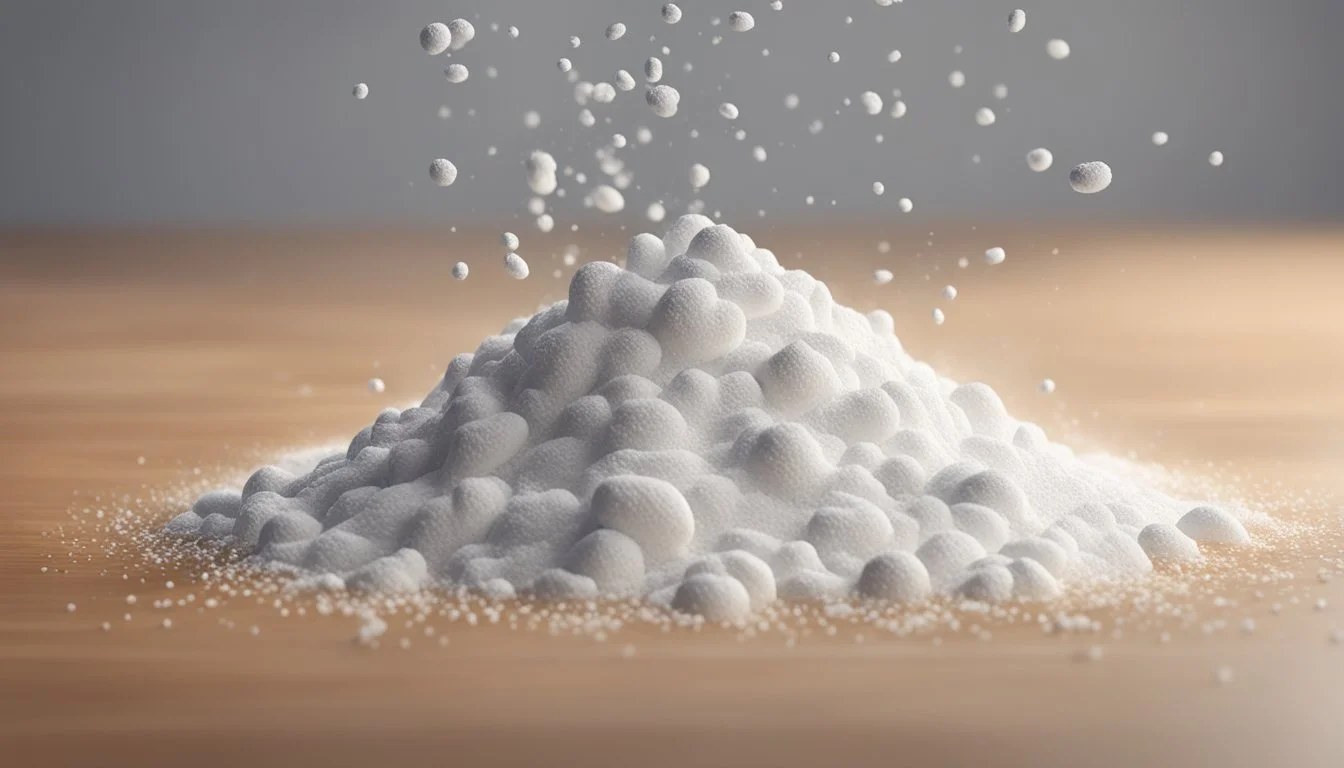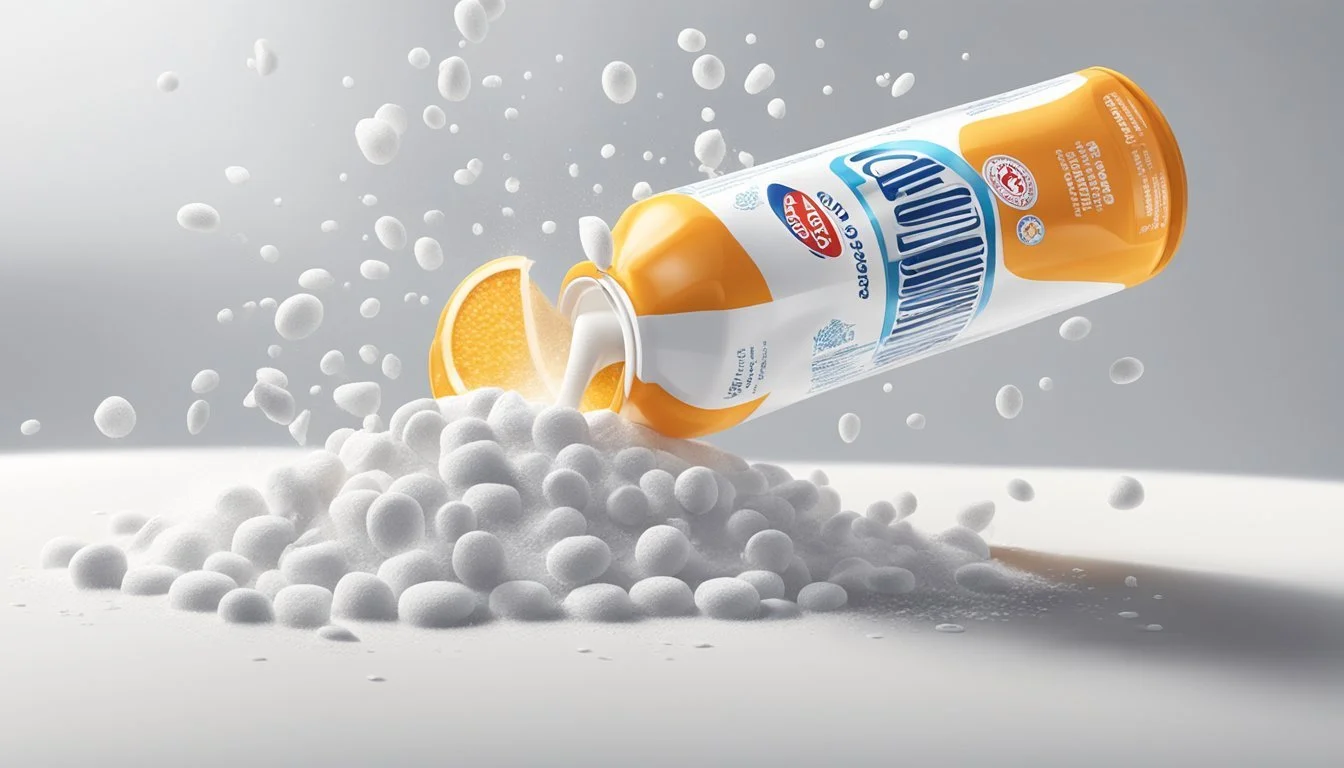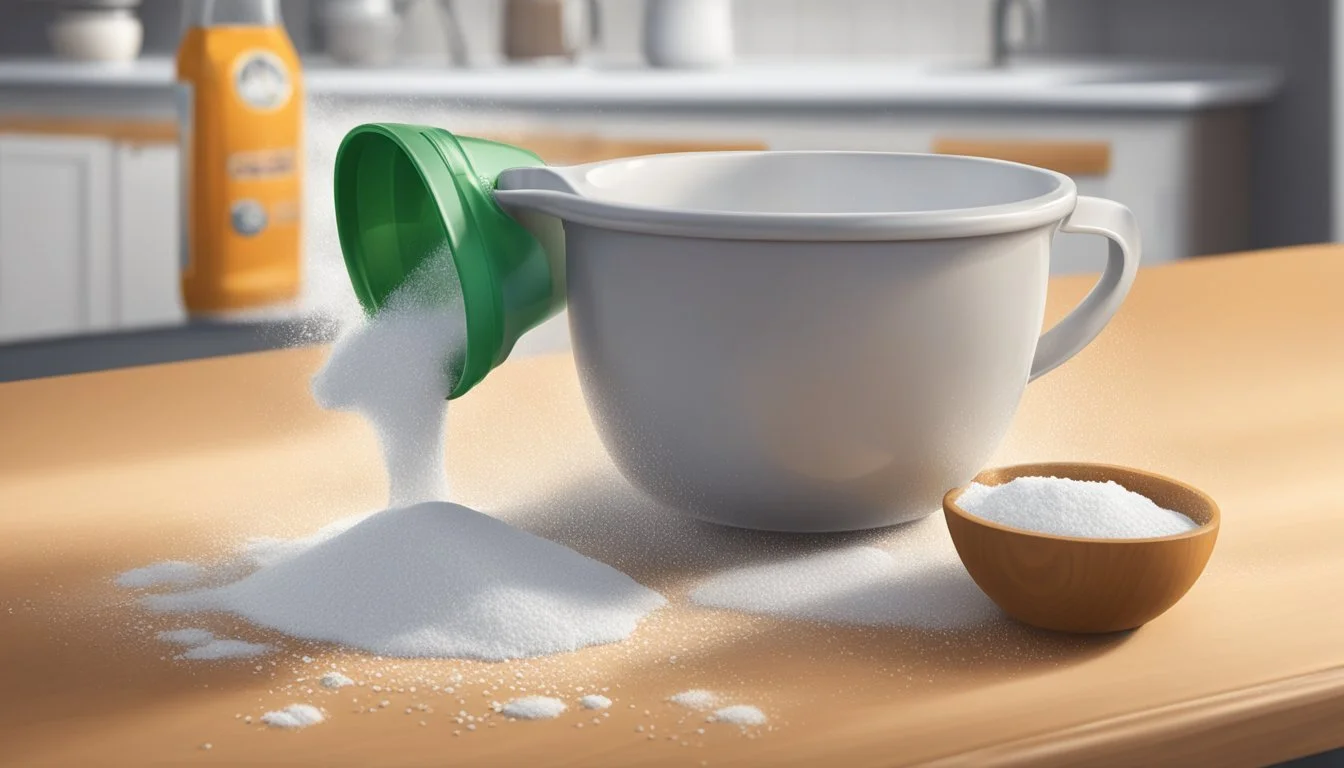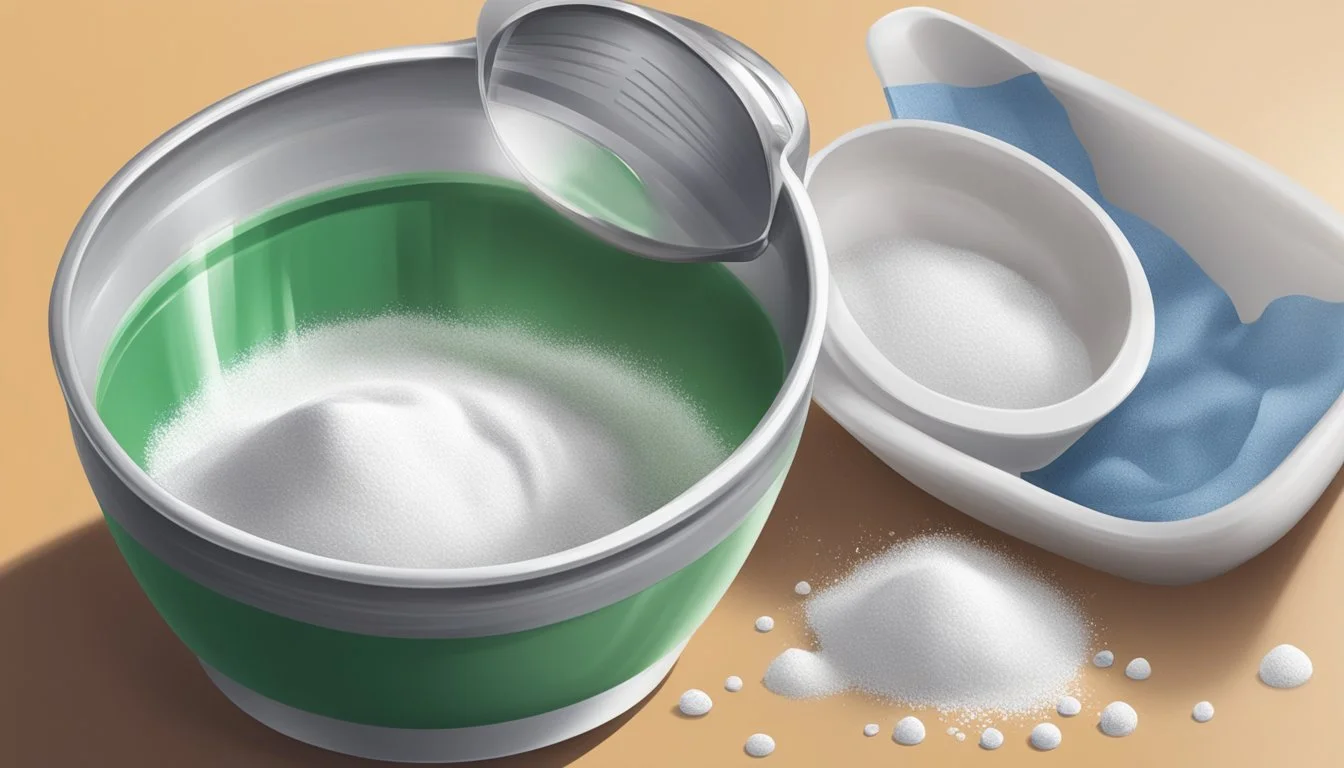How Many Tablespoons in a Pound of Baking Soda
Accurate Measurement Guide
Determining the number of tablespoons in a pound of baking soda is essential for those who are engaged in the culinary arts, particularly in baking where precise measurements are key. Conversion between weight and volume units is a common necessity in the kitchen, as different recipes might call for ingredients to be measured in one way or another. Baking soda, being a dry and relatively dense ingredient, has a standard conversion rate when translating pounds to tablespoons.
The measurement of baking soda by volume can vary based on factors such as settling and the method of scooping. Despite these variables, a standardized conversion can be used for consistency. Generally, a pound of baking soda equates to approximately 32 tablespoons. This conversion relies on the average density of baking soda and the accepted weight for a tablespoon, which is about 14.3 grams.
When converting from pounds to tablespoons, it's important for chefs and bakers to account for the texture and compaction of baking soda. For a more precise measurement that takes into account the specific characteristics of the ingredient at hand, one might refer to conversion charts or use a kitchen scale. Consistent conversions ensure reliable outcomes in recipes, making such knowledge a staple in the repertoire of any experienced cook or baker.
Understanding Conversions
In baking, precision is crucial, and converting between units like tablespoons and pounds requires understanding the difference between volume and weight.
Tablespoons to Pounds
A tablespoon is a unit of volume in the US customary system primarily used in cooking to measure liquid and dry ingredients. On the other hand, a pound is a unit of weight. Converting tablespoons to pounds involves understanding the density of the substance being converted. For baking soda, which often has a standardized density, a direct conversion can be difficult due to the variances in weight for a given volume. The following table illustrates tablespoons to weight conversion for baking soda:
Tablespoons Grams Ounces Pounds 1 17.0 0.60 0.0375 2 34.0 1.20 0.075 3 51.0 1.80 0.1125 4 68.0 2.40 0.15 16 272.0 9.60 0.60 32 544.0 19.20 1.20
Based on this table, there are approximately 32 tablespoons in a pound of baking soda. This calculation assumes that 1 tablespoon of baking soda weighs approximately 17 grams or 0.6 ounces.
Volume and Weight
The volume is the amount of space a substance occupies, measured in units such as cups, tablespoons, or milliliters. Weight, measured in grams, ounces, or pounds, refers to the mass of an ingredient. A scale is vital when precision and accuracy are required in recipes. While tablespoons offer a measurement of volume, scales provide a measurement of weight, leading to more exact ingredient quantities.
For dry ingredients like baking soda, the weight can differ based on how the ingredient is settled or compacted in the measuring spoon. Therefore, using a scale ensures accuracy and consistency across different measurements. The density of baking soda is typically consistent enough that a conversion formula can be reliably used to translate volume measurements to weight when a scale is not available.
Baking Essentials
When it comes to baking, precise measurements and understanding the function of ingredients such as baking soda are vital for the success of any recipe. Baking soda serves as a pivotal leavening agent, and distinguishing it from similar ingredients like baking powder helps bakers achieve the desired flavor and texture.
Role of Baking Soda
Baking soda, or sodium bicarbonate, is a leavening agent that is a staple in baking. It reacts with acidic components in a batter or dough, such as yogurt, lemon juice, or vinegar, releasing carbon dioxide that causes the mixture to rise and creates a light and airy texture. Given that baking soda carries out its role without the need for additional acids, it's solely reliant on the recipe's other ingredients to activate its leavening properties.
Ingredient Role in Baking Note Baking Soda Leavening Agent Needs an acid to activate.
Comparing Baking Soda and Baking Powder
Baking powder and baking soda are both leavening agents, but they're not interchangeable. Baking powder contains baking soda along with an acidifying agent and usually a drying agent. It comes in two types: single-acting, which reacts when wet, and double-acting, which reacts in two stages, becoming active once wet and again when heated. Because of the built-in acid, baking powder can leaven doughs and batters without any added acidic ingredient.
Ingredient Contains Activation Baking Soda Sodium Bicarbonate Requires an acid Baking Powder Sodium Bicarbonate, Acid(s) Activates with moisture/heat
Using these leavening agents correctly ensures the end product is baked to perfection, both in rise and texture. It is essential to note that while baking soda can sometimes be substituted with baking powder, the reverse is not true due to the presence of acids in baking powder.
Measurement Equivalents
Converting weights and volumes in baking is crucial for achieving the desired outcome, especially when ingredients like baking soda are measured by weight for accuracy.
Cups to Tablespoons
To convert cups to tablespoons, one must know that 1 cup is equivalent to 16 tablespoons. Since baking soda is a dry ingredient, this measure applies.
Example:
1 cup of baking soda = 16 tablespoons
Ounces to Grams
For converting ounces to grams, the standard equation is 1 ounce is equal to approximately 28.35 grams. This conversion is necessary when precision is required in recipes.
Example:
1 ounce of baking soda = 28.35 grams
Dry and Wet Ingredients Conversion
Dry and wet ingredients have different volume-to-weight conversion factors due to their density. For dry ingredients like baking soda, 1 cup typically equals 16 tablespoons or about 8 ounces. For wet ingredients, the volume (milliliter or liter) to weight (grams) conversion depends on the specific liquid's density.
Examples:
Dry Ingredients:
1 tablespoon of baking soda = 15 grams (approximately)
Wet Ingredients:
1 milliliter of water = 1 gram
1 liter of water = 1000 grams (1 kilogram)
It's important to use appropriate measuring tools—spoons and cups for volume, and scales for weight—to ensure accuracy.
Ingredients in Baking
In baking, precision is crucial, as each ingredient serves a specific role in the final product. The balance between dry and wet ingredients is particularly important for texture and consistency.
Common Dry Ingredients
Dry ingredients act as the structure and foundation of baked goods. Here’s a list of typical dry ingredients found in baking recipes:
Flour: The backbone of many baked goods, providing structure.
Sugar: Adds sweetness and affects the texture; it can range from granulated, powdered to brown sugar.
Baking Soda: A leavener that reacts with acidic ingredients to release carbon dioxide.
Salt: Enhances flavor and controls yeast in bread recipes.
Granola: Adds crunch and is often used in cookies and bars.
Almonds (whole): Provide texture and flavor, often used in toppings or ground as flour.
Common Wet Ingredients
Wet ingredients in baking often determine the moisture level and can initiate chemical reactions in the batter or dough. Essential wet ingredients include:
Water: The most basic wet ingredient used to hydrate dry components.
Butter: Adds richness, flakiness, and flavor; crucial in pastries like croissants.
Milk: Provides moisture and helps with the structure, often in cakes and bread.
Buttermilk: Adds tenderness and is used in recipes like pancakes for its acidic properties which react with baking soda.
Eggs: Serve as a binding agent and help with leavening and structure.
Vegetable Oil: Contributes to the tenderness and keeping quality of cakes.
Vinegar: Often used with baking soda to aerate and lighten bakes.
Honey and Maple Syrup: Natural sweeteners that also add moisture.
Peanut Butter: Adds flavor and density in cookies and bars.
Vanilla Extract: A flavor enhancer used in a variety of baked goods.
Specialty Baking Ingredients
In the world of baking, specialty ingredients cater to a wide array of tastes, dietary needs, and baking techniques. From gluten-free alternatives to distinct sweeteners, each ingredient brings a unique characteristic to the final bake.
Flour Varieties
Gluten-Free Options: For those avoiding gluten, options like almond flour, coconut flour, buckwheat flour, and oat flour provide alternatives with varying flavors and baking properties. Each flour has a distinct texture and absorbency:
Almond Flour: Lightweight and protein-rich, suitable for tender pastries.
Coconut Flour: Highly absorbent, requiring additional liquid in recipes.
Buckwheat Flour: Adds earthiness and is often combined with other flours.
Oat Flour: Provides a soft and chewy texture, often used in cookies.
Wheat-Flour Varieties:
Bread Flour: Higher gluten content ideal for yeast bread with chewy texture.
Pastry Flour: Lower protein than all-purpose, yielding tender pastries.
Cake Flour: Finely milled, bleached flour that produces light and airy cakes.
Starches such as cornstarch, tapioca starch, and potato starch are also pivotal, serving as thickeners or as part of gluten-free flour blends.
Sweetener Varieties
Alternative sweeteners offer flavors and textures beyond white sugar:
Demerara Sugar: A crunchy texture with a toffee flavor, less processed.
Turbinado Sugar: A raw sugar with large crystals and a molasses note.
Powdered Sugar: Also known as confectioners' sugar, ideal for icings and dusting.
Coconut Sugar: A low glycemic index sweetener, imparting a subtle caramel-like taste.
Molasses: Adds moisture, color, and a deep, robust flavor to baked goods.
The choice of sweetener affects not only the sweetness but also the moisture and color of the finished product.
Healthy Fats and Oils
The fats used in baking impact the texture, flavor, and moisture of baked goods:
Coconut Oil: Often used as a vegan substitute for butter, adding subtle coconut flavor.
Margarine: A plant-based alternative to butter, varies in water content.
Vegetable Shortening: Gives a flakier texture in pastries than butter does.
Traditional fats like whole milk, butter, and eggs are essential in classic baking, but these healthier alternatives allow for dietary adaptations without sacrificing quality.
Baking Science
In the context of how many tablespoons are in a pound of baking soda, it is vital to understand baking soda's role as a leavening agent and how precise measurements ensure desired results in baking.
The Chemistry of Baking
Baking soda, chemically known as sodium bicarbonate, plays a crucial role as a leavening agent in baking. When it reacts with an acidic ingredient, such as lemon juice or buttermilk, it releases carbon dioxide gas. This gas gets trapped in the batter, causing it to rise and become light and fluffy. The precise reaction depends on the presence of acidic components in the recipe. For example:
1/2 teaspoon of baking soda might be enough to leaven a cup of flour if the recipe includes acidic elements like vinegar, lemon juice, or cream of tartar.
Without acidic ingredients, additional leavening agents, like baking powder, which contains both bicarbonate of soda and an acidifying agent, may be necessary to achieve the desired rise.
Adjusting Recipes for Accuracy
Baking is an exact science, and success often relies on the precision of ingredient measurements. When converting volumes to weight (like tablespoons of baking soda to pounds), it's vital to consider:
Grains of the baking soda: can vary in size, affecting the volume-to-weight ratio.
Shelf life: as baking soda ages, it can lose its potency, affecting its leavening power.
Using a kitchen scale ensures accuracy when adjusting recipes, as it measures ingredients by weight, which is more precise than volume measurements.
Here is an example of how measurements might be listed in a recipe for accuracy:
Volume Weight 1 tablespoon (Tbsp) 14 grams (g) 2 Tbsp 28g 3 Tbsp 42g
In terms of the original inquiry, different sources might list slight variations in the conversion of tablespoons to a pound of baking soda, as the weight of a tablespoon can be influenced by factors including the granularity and compactness of the baking soda.
When adjusting recipes or scaling ingredients, always keep these scientific principles in mind for consistent and reliable baking outcomes.
Substitutions and Alternatives
In recipes or when using baking soda as a cleaning agent, knowing suitable substitutions and alternatives can be crucial. The effectiveness and outcome might vary, so precise measurements and understanding the role of baking soda in the recipe are important.
Replacing Baking Soda
Baking Powder: If one needs to replace baking soda in a recipe, baking powder can serve as a reliable alternative. Typically, baking powder contains both an acid and a base which can emulate the leavening properties of baking soda.
For every 1 teaspoon of baking soda, use 3 teaspoons of baking powder.
Self-Rising Flour: Self-rising flour is another option, which already contains baking powder. However, it should be noted that additional adjustments to the recipe may be needed to account for the added salt and baking powder.
Dairy and Sugar Substitutes
Butter: When a recipe calls for butter, but none is available, one may substitute it with dairy options or even certain oils. The flavor and texture of the finished product will vary with each substitute.
For 1 cup of butter, use:
3/4 cup of milk plus 1/3 cup of oil;
1 cup of buttermilk mixed with 1/3 cup of oil.
Granulated Sugar: Recipes often require granulated sugar, but when one seeks an alternative, understanding the desired taste and texture is key.
For 1 cup of granulated sugar, possible substitutes include:
1 cup of honey (reduce other liquids in the recipe by 1/4 cup)
1 cup of maple syrup (also reduce other liquids in the recipe by 1/4 cup)
It is important to consider that while these substitutes can replace the role of certain ingredients like baking soda, the flavor and the outcome might differ from the original intention of the recipe.







